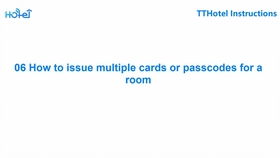Understanding the Retreat Concept

Hosting a retreat can be a rewarding and lucrative venture. Before diving into the specifics, it’s essential to understand what a retreat is. A retreat is a place where individuals or groups can disconnect from their daily lives to focus on relaxation, personal growth, or specific activities. Retreats can range from wellness and meditation to adventure and team-building experiences.
Choosing the Right Location

The location of your retreat is crucial. It should be serene, accessible, and offer the amenities you need. Consider the following factors:
-
Scenery: Look for a location with beautiful surroundings that can enhance the retreat experience.
-
Accessibility: Ensure the location is easy for attendees to reach, either by car or public transportation.
-
Amenities: Check for facilities like a swimming pool, spa, or dining options that can add value to your retreat.
Defining Your Retreat’s Purpose

Decide what your retreat will focus on. This will help you attract the right audience and create a unique selling point. Some popular retreat themes include:
-
Wellness and Fitness: Focus on yoga, meditation, and healthy eating.
-
Adventure: Offer outdoor activities like hiking, rock climbing, or water sports.
-
Personal Development: Provide workshops and seminars on topics like leadership, communication, and self-improvement.
Creating an Itinerary
Your retreat’s itinerary should be well-planned and engaging. Here are some key elements to consider:
-
Morning Sessions: Start with activities that energize attendees, such as yoga or meditation.
-
Afternoon Workshops: Offer workshops or seminars that cater to different interests.
-
Evening Activities: Plan social events, such as group dinners or movie nights.
Marketing Your Retreat
Marketing is crucial to attract attendees. Use the following strategies:
-
Online Presence: Create a website and social media profiles to promote your retreat.
-
Email Marketing: Send newsletters to keep potential attendees informed about your retreat.
-
Partnerships: Collaborate with related businesses, such as wellness centers or travel agencies.
Setting Prices and Fees
Decide on a pricing structure that covers your costs and generates a profit. Consider the following factors:
-
Accommodation: Include the cost of lodging in your pricing.
-
Facilities: Factor in the cost of using amenities like a swimming pool or spa.
-
Activities: Include the cost of organizing and conducting activities.
Handling Logistics
Ensure you have everything in place to make your retreat run smoothly:
-
Transportation: Arrange for transportation to and from the retreat location.
-
Food and Beverages: Plan meals and snacks for attendees.
-
Staffing: Hire staff to assist with activities, registration, and other tasks.
Generating Additional Revenue
In addition to retreat fees, consider the following ways to generate additional income:
-
Merchandise: Sell branded merchandise like t-shirts, water bottles, or books.
-
Workshops: Offer additional workshops or seminars for an extra fee.
-
Private Events: Host private retreats for corporate teams or small groups.
Measuring Success
Track your retreat’s performance to identify areas for improvement:
-
Attendee Feedback: Collect feedback to understand what attendees liked and disliked.
-
Financial Performance: Monitor your revenue and expenses to ensure profitability.
-
Word of Mouth: Encourage attendees to share their experiences with friends and family.
By following these steps and continuously refining your retreat offerings, you can create a successful and profitable retreat business.


